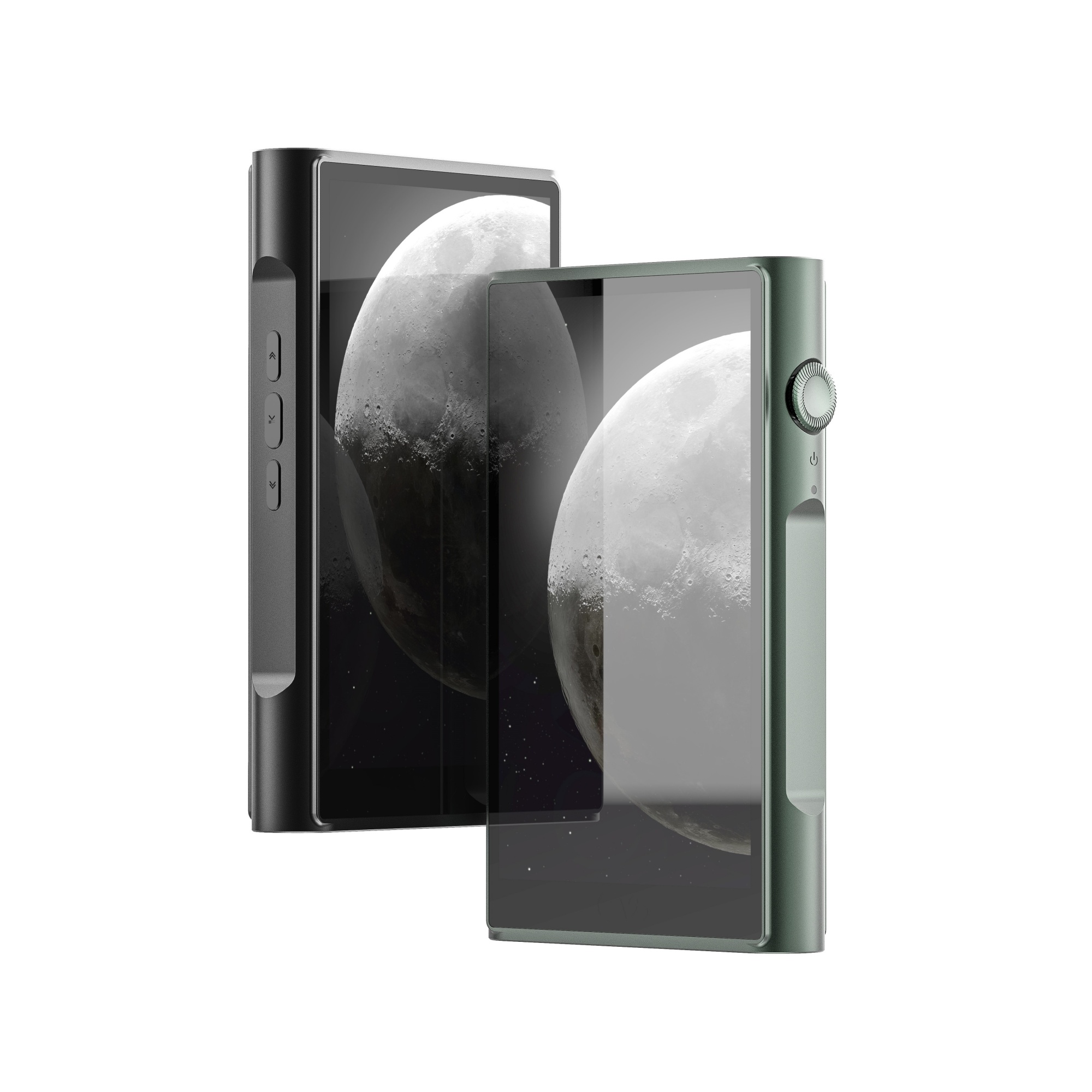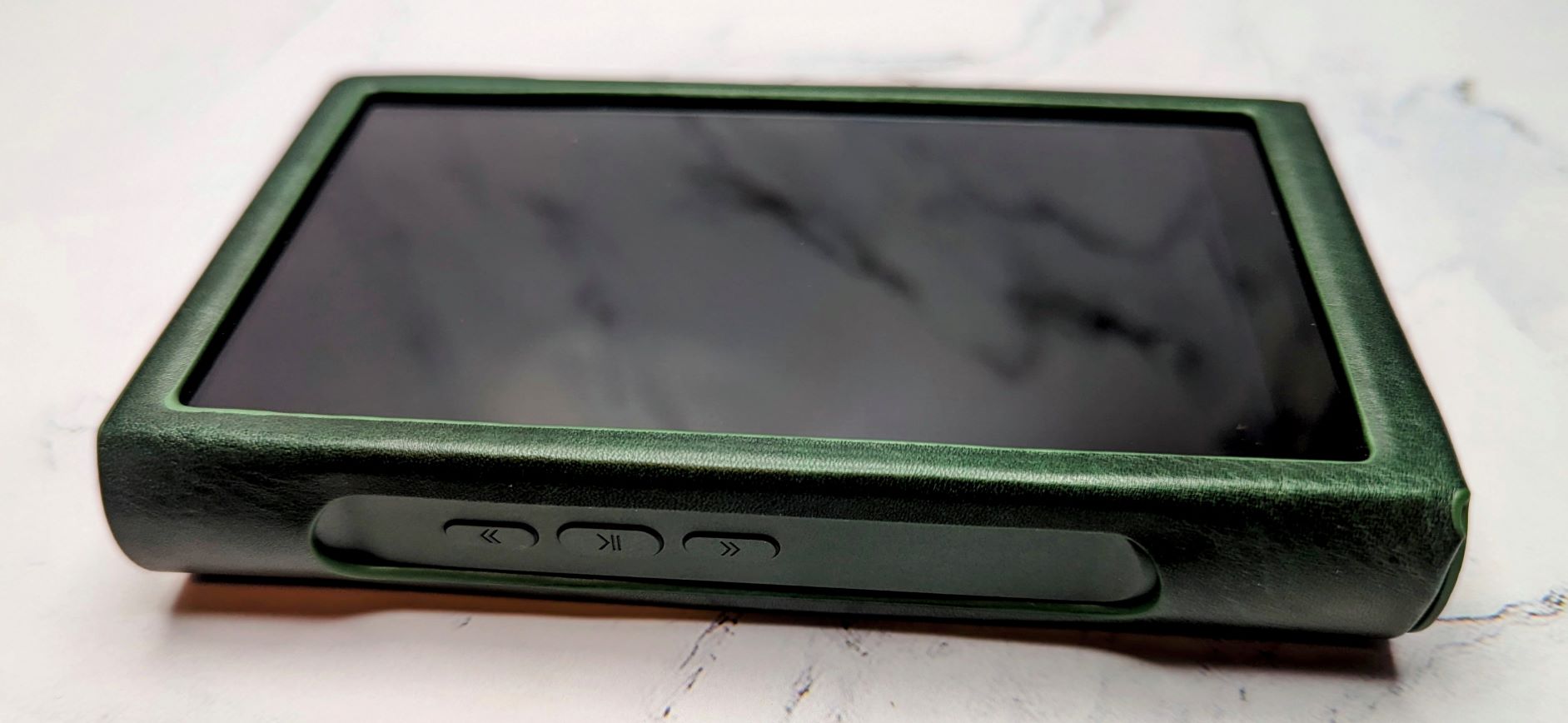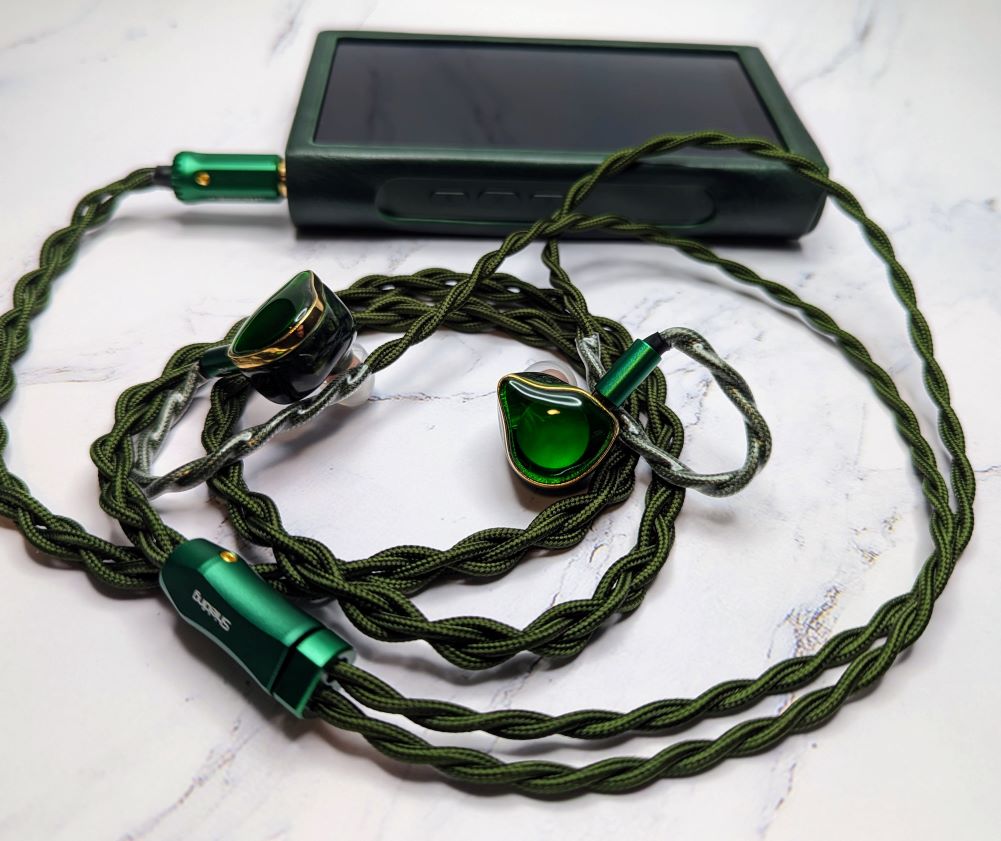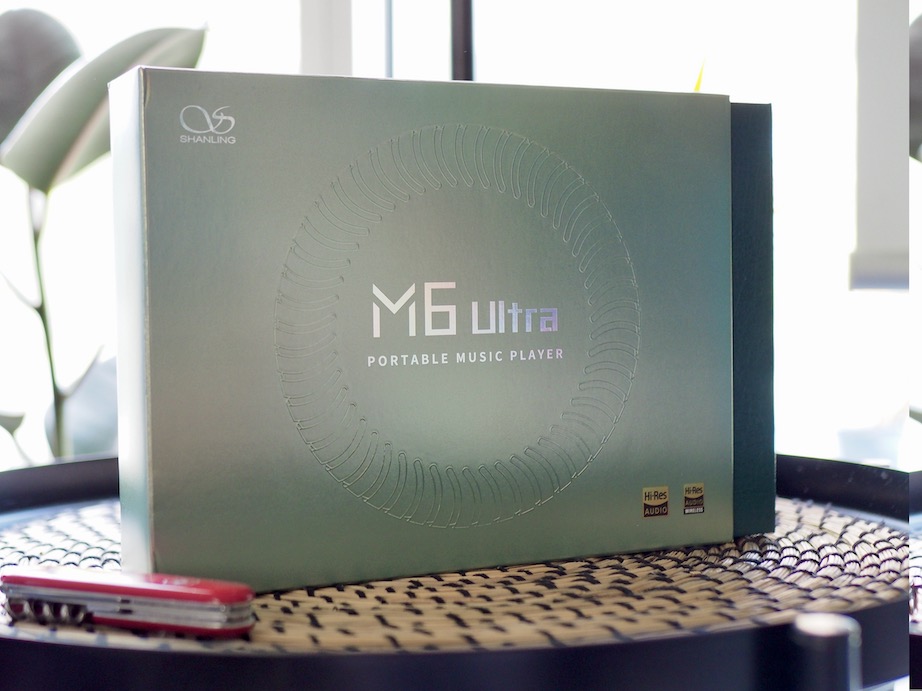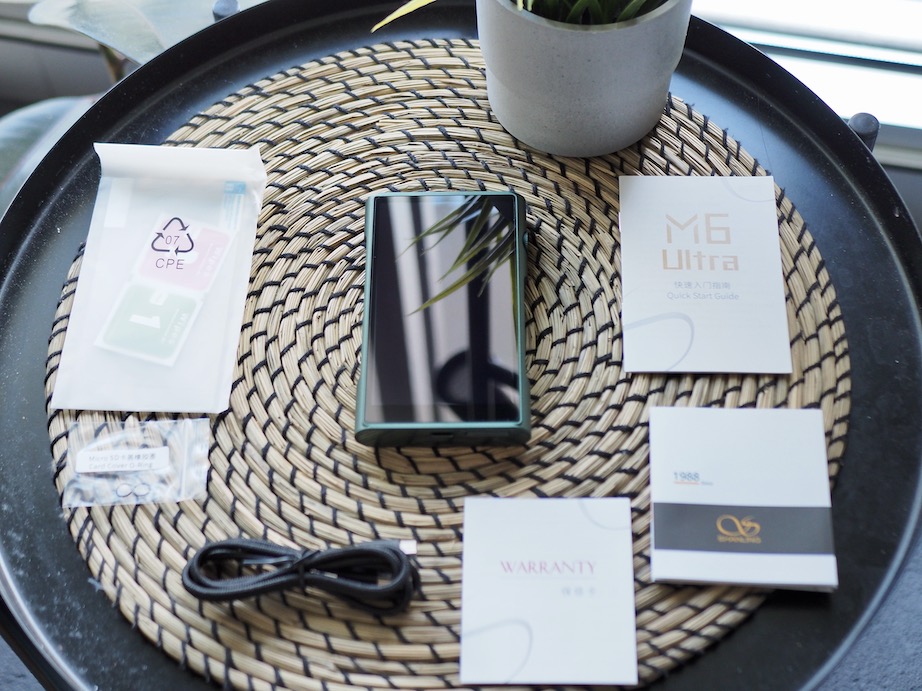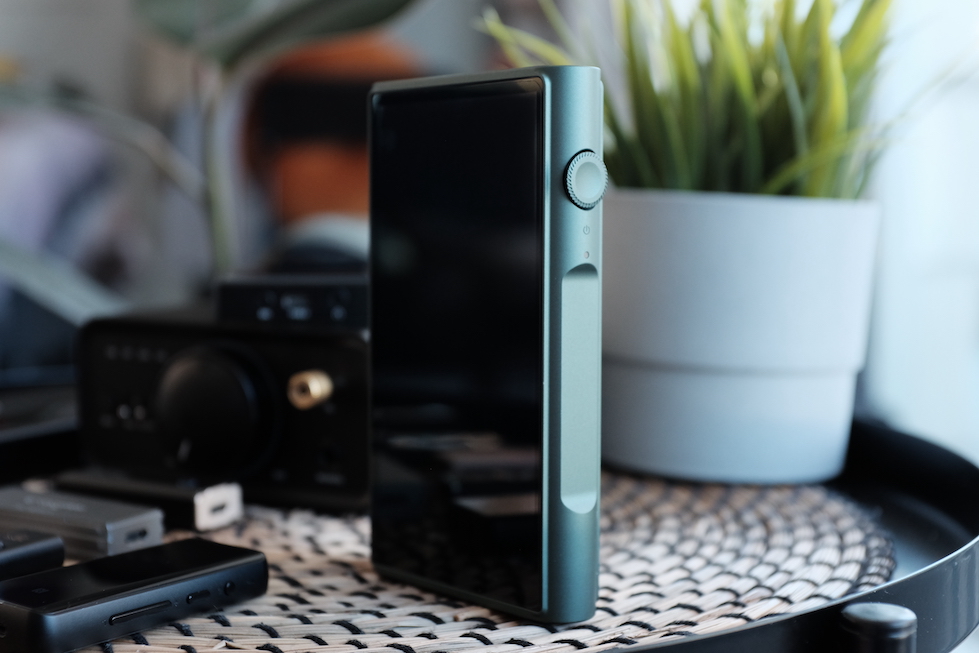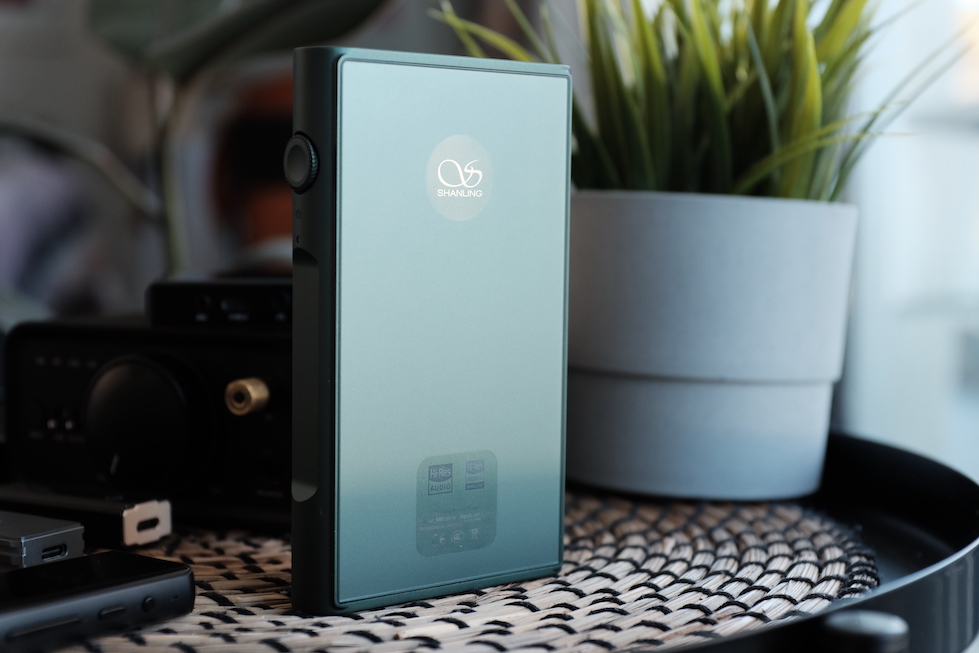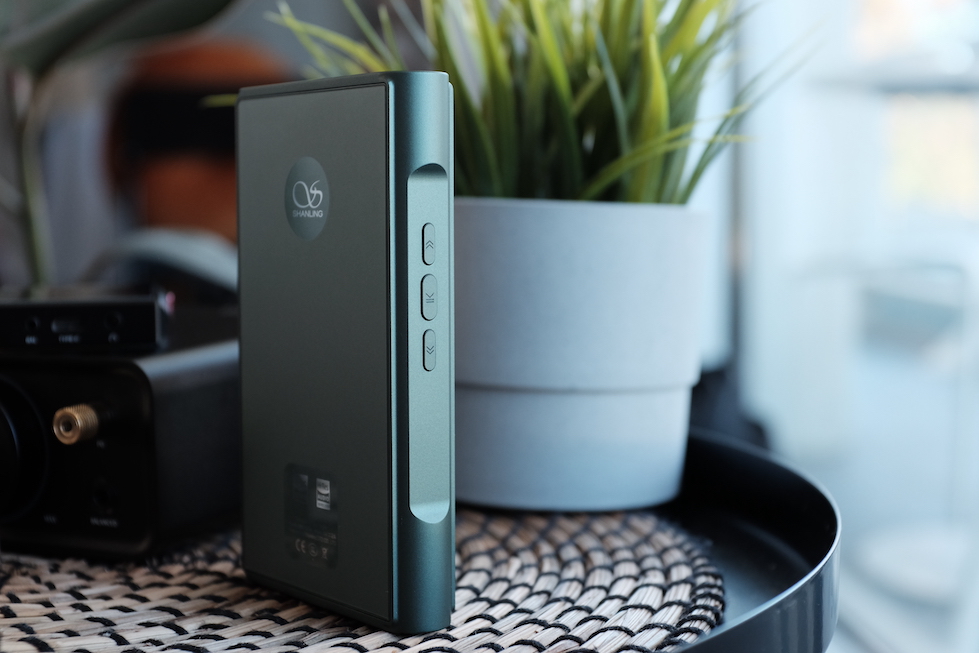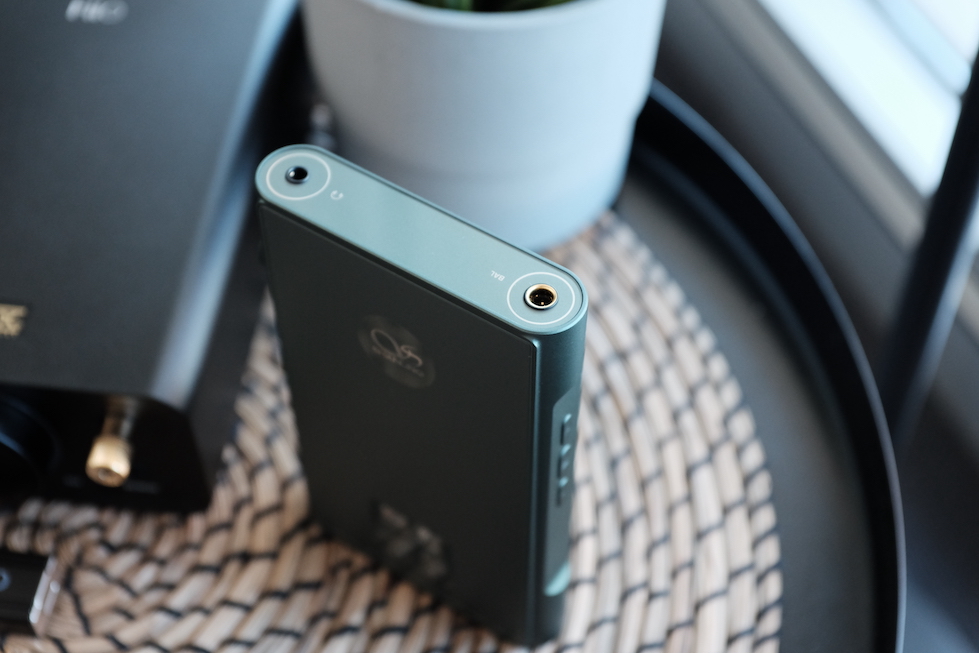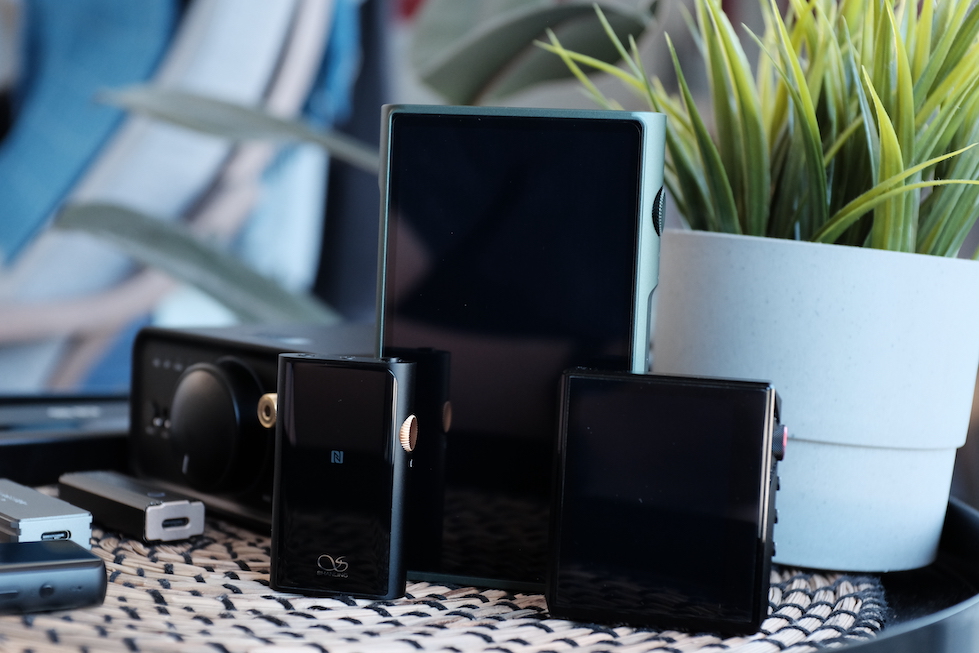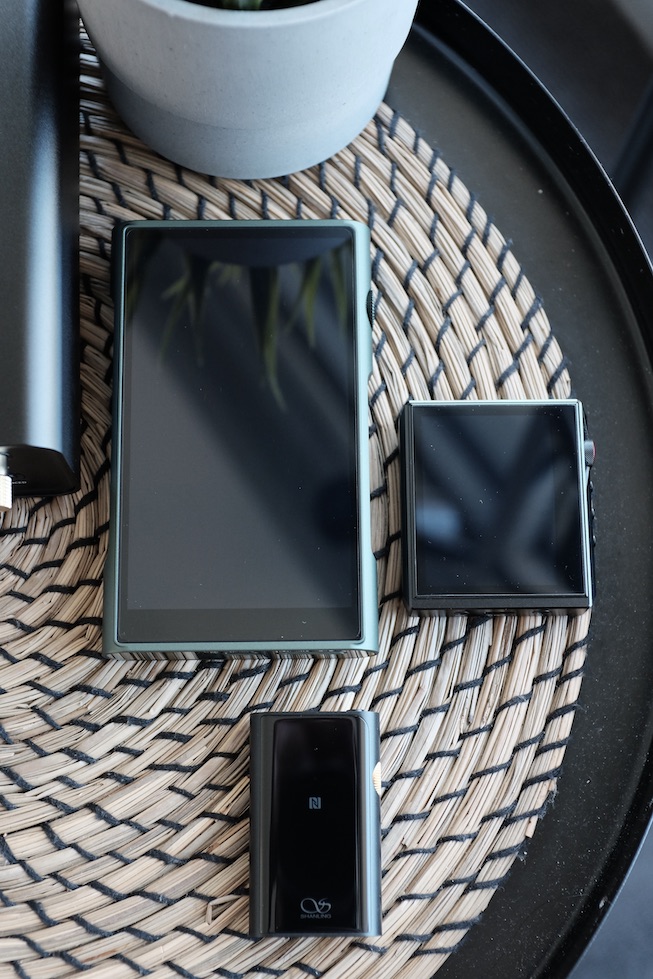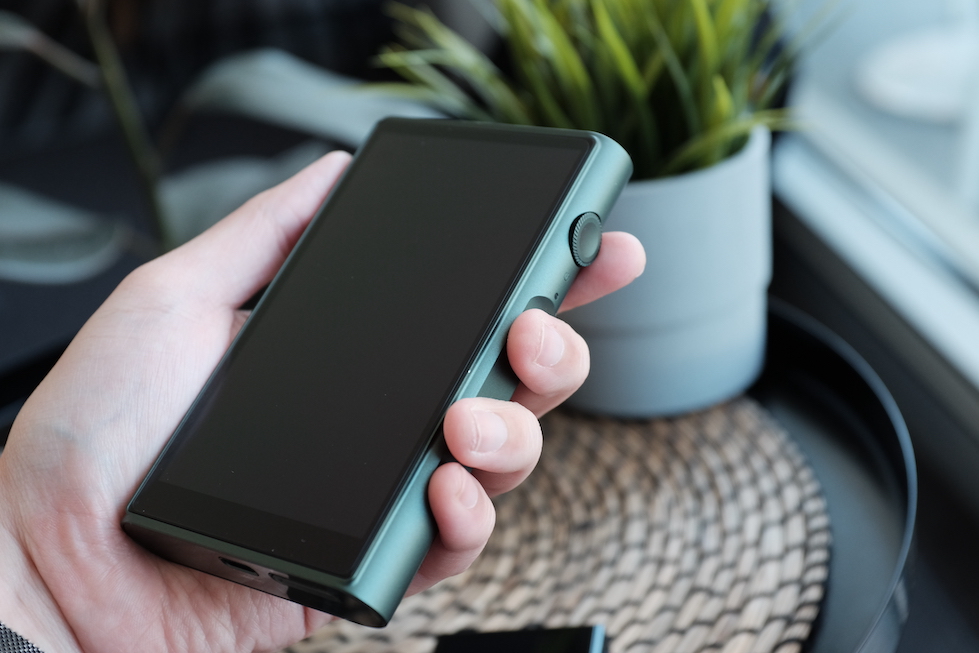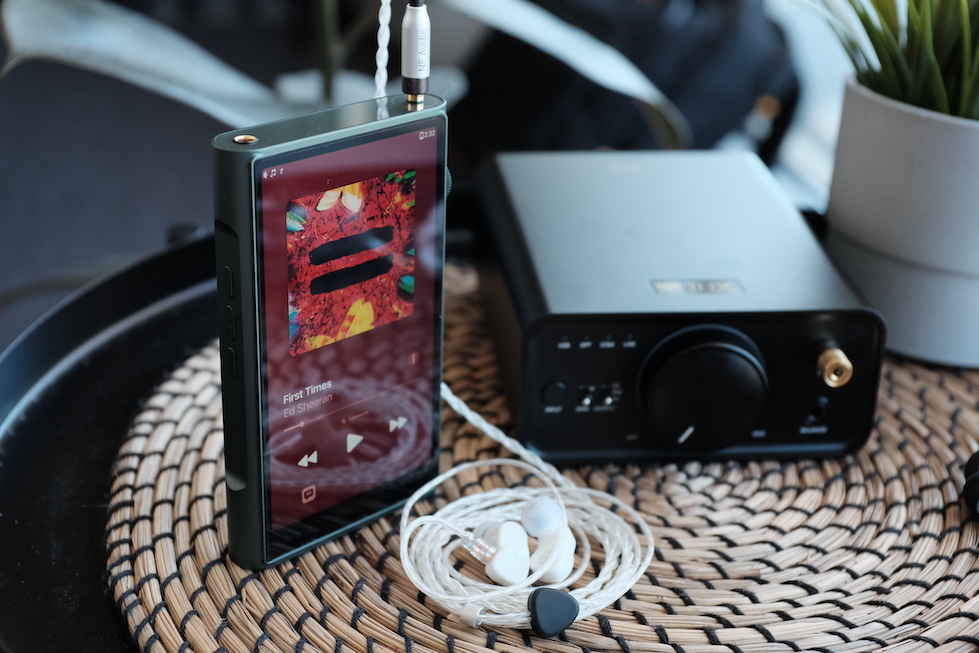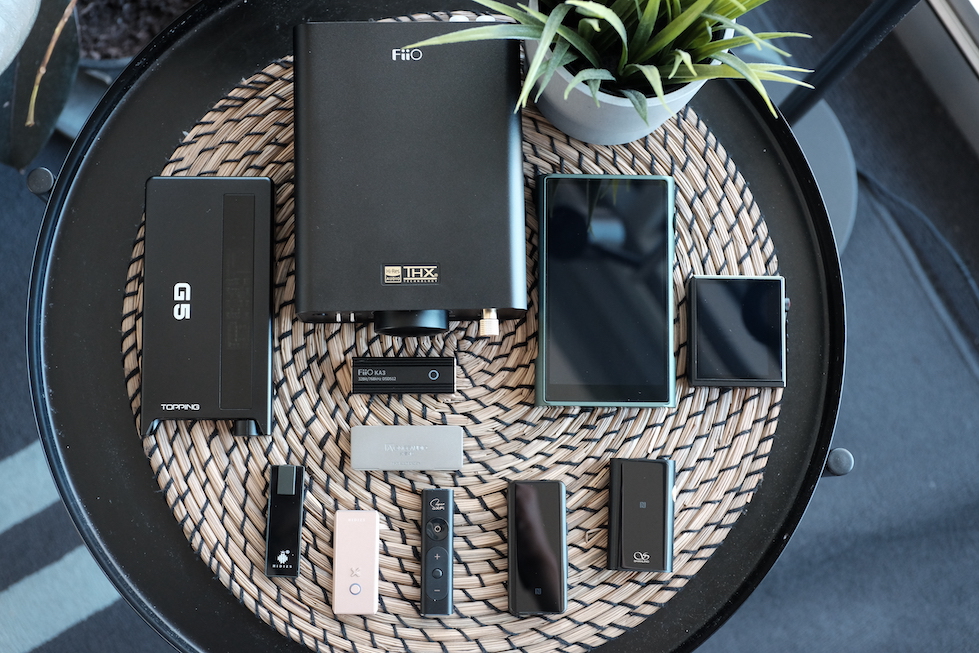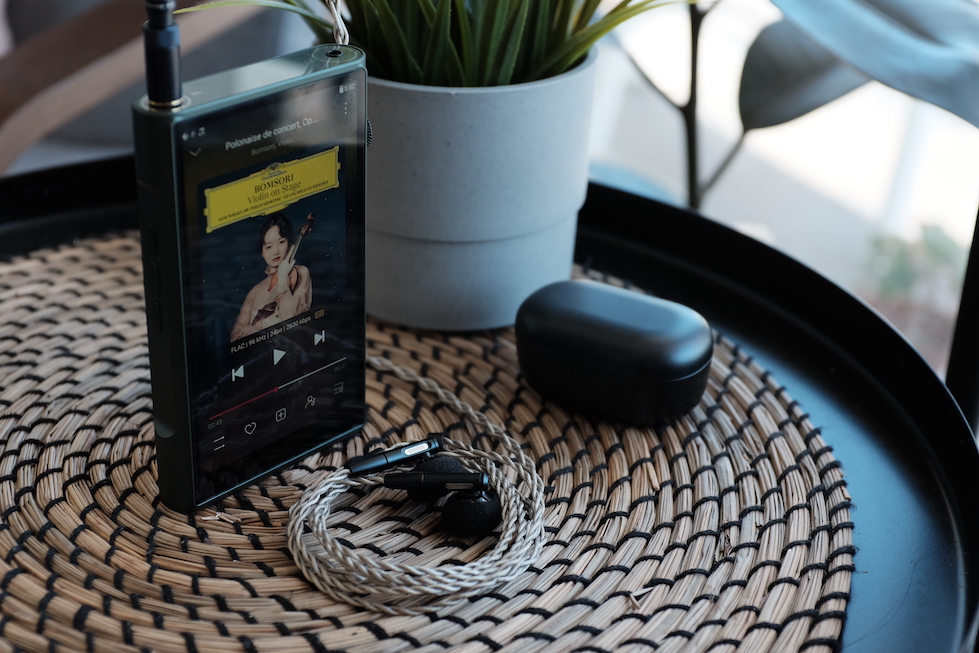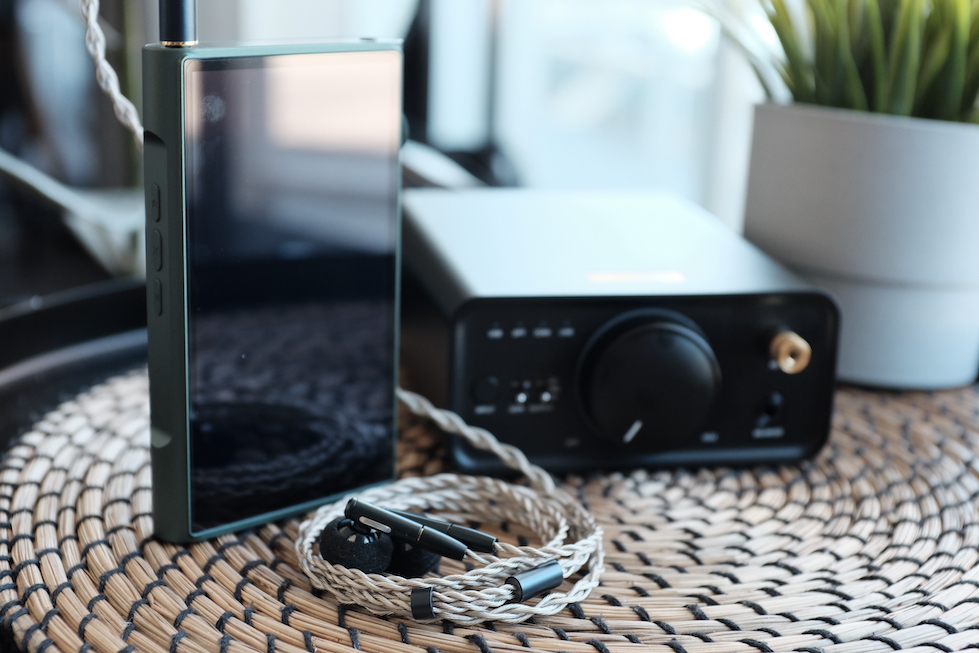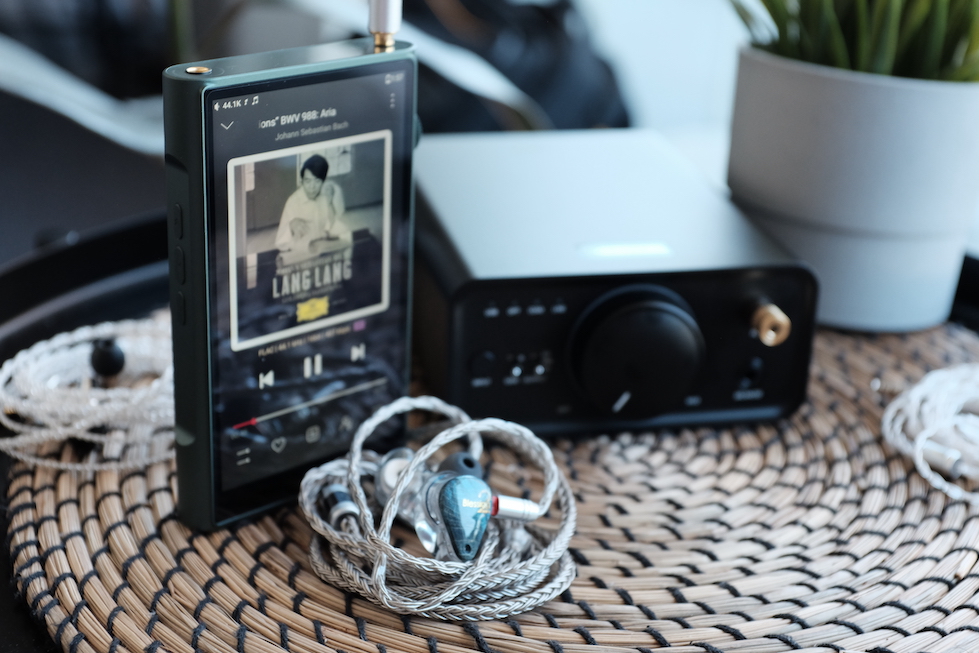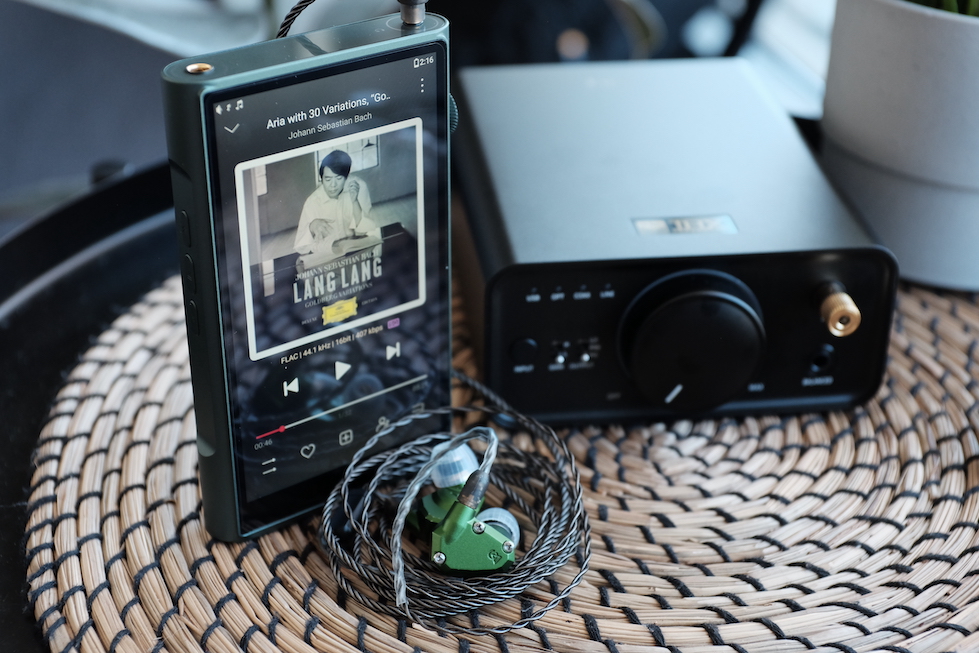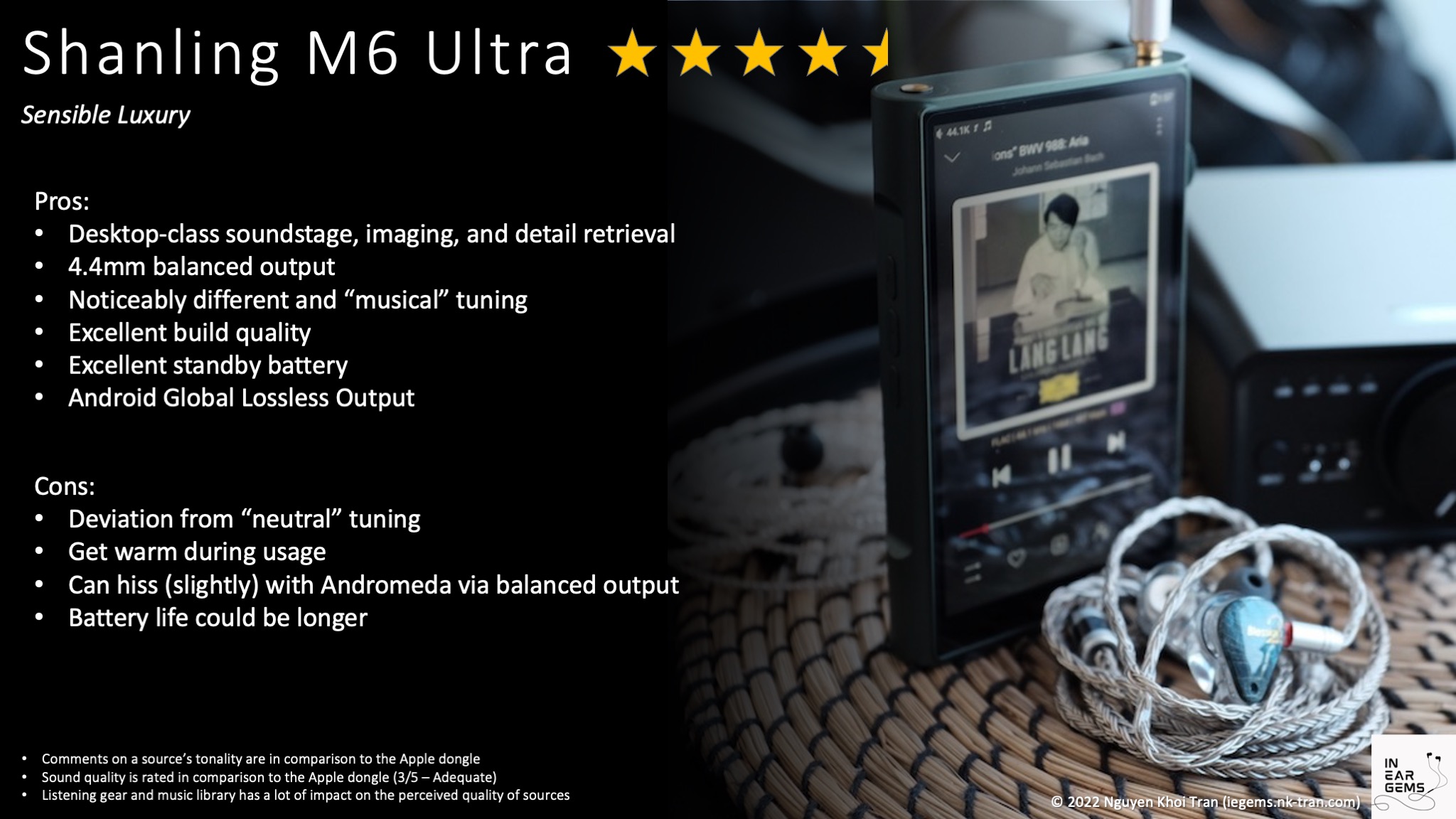What’s the point of digital audio players (DAP) in this day and age?
That question has haunted me since I realised that the “bricks” that many at my local hi-fi store use are oversized MP3 players (no, sorry, DAPs). Why would anyone want a device that cannot stream online music or has an obsolete Android version? Sound quality? What’s the point, given that perfectly measured DAC/amp dongles exist?
Despite my scepticism, I couldn’t help but yearn for one of those bricks. Recently, I acquired a
portable DAC/amp unit and was sure that the madness over “bricks” was over.
It was, in fact,
not over.
Let’s talk about Shanling M6 Ultra (M6U) and what life with a DAP looks like.
Preambles
- I use the term “source” to denote a DAC + Amp combo.
- Sources do not make sounds. Therefore, when I say sources “sound” a certain way, I talk about the change they make to my IEMs and earphones.
- I want my music to be crisp, clear, well-separated and form a 3D soundstage around my head. Sources that intensify those characteristics of my IEMs are considered “better”.
- This review is based on my subjective experience. Ratings are given based on A/B tests with benchmark sources and IEMs.
- Making loud noises does not mean that a pair of IEMs or earphones are driven to their full potential.
- Despite my textual descriptions, improvements from sources are minor and nuanced. If you are beginning your head-fi journey, getting different IEMs or earphones would yield more benefits. If you know your gears very well, improvements from sources can be delightful.
- The M6U was purchased at a discount directly from Shanling for this review (Thank you!). The unit retails for USD $920 on Shanling’s Amazon store (non-affiliated link).
Specs
- DAC Chips: AK4493SEQ x 4
- Output ports: 3.5mm (Single-ended) and 4.4mm (balanced)
- Single-ended output power: 240mW@32ohm per channel
- Balanced output power: 720mW@32ohm per channel
- Battery: 5650mAh (13.5 hours 3.5mm, 9 hours 4.4mm, 58.5 hours Bluetooth)
- Quick charge: Qualcomm QC3.0 18W
- Bluetooth 5.0 (Receive: LDAC & SBC, Transmitting: LDAC, aptX HD, aptX, SBC)
- Android 10 with built-in Android Global Lossless Output.
- 4GB ram, 64GB internal storage
- MQA support: 16x
Non-sound Aspects
First thing first, what is Shanling M6 Ultra?
It is a DAP (or an oversized MP3 player, if you will).
M6U sits right in the middle of Shanling’s DAP line. It is one step above the M3 Ultra, side-by-side with the older M7, and one step below the flagship M8 and M9.
The best way to think about M6U is an Android phone without the ability to receive and make phone calls. Instead, it is equipped with a high-end DAC (digital analogue converter) and amplifiers. This little brick can serve many different purposes when it comes to audio.
But we are getting ahead of ourselves. Let’s start from the top with the unboxing experience.
After weeks of (impatient) waiting, I couldn’t wait to rip the shipping box apart when it arrived at my door. Since I’m more used to the futuristic, sci-fi aesthetic of Fiio and Hidizs, I was pleasantly surprised by the
elegant packaging of Shanling with the faux leather box and the green tone. My first reaction was to bring the whole package to my wife, and she also had to admit that the presentation was worthy of a luxurious item.
The content of the box is less glamorous. You have the DAP, a nice USB cable, some rubber rings whose purposes I still don’t know, extra screen protectors, and papers. I especially like the little catalogue showing all the Shanling products. It reminds me of the catalogues coming with Lego sets, instilling the desire for more even though you are yet to finish the current set.
M6U is a solid chunk of metal and glass. It feels hefty and well-constructed. When I gave the DAP to the staff at a local hi-fi store for inspection, their first impression was, “it feels like an Astell & Kern (A&K).” Having used the SA700, I still think A & K DAPs are better built, but the difference is slight. M6U feels more substantial in hand than Fiio M11+.
On the right side of the device, you have a clickable volume wheel that also serves as a power button. On the right side, you have the usual playback control buttons. At the top, you have 3.5mm and 4.4mm outputs. Even from the appearance, you can already guess that the 4.4mm output is the favoured one with the golden ring. At the bottom of the unit, you have a USB-C connector and micro-SD card slot.
M6U is chunky but not a large device. It is as wide as my iPhone XR and around half a thumb shorter. The thickness of M6U easily doubles my phone. It is almost the same size as a battery-powered DAC/amp unit like Topping G5. It absolutely dwarfs dongles and pocketable DAP like Hidizs AP80 Pro X.
M6U is an ergonomic device. My fingers naturally fall in the curves of the metal frame, locking the DAP securely in my hand. All the buttons and wheels are easy to reach regardless of whether I use my left or right hand. My only complaint is that the wheel can rotate when I slide the DAP into my pocket.
This problem can be alleviated by using the official leather case, which is, unfortunately, a separate purchase.
Screen, Software, BatteryPermalink
The screen is perfectly adequate for the purpose of browsing music and even consuming media. It has a wide viewing angle, with good colour and contrast. I tried some YouTube videos with M6U and have nothing good or bad to report about the screen. In a side-by-side comparison, it is more or less of the same quality as my iPhone XR. The screen is bonded to the front glass, just like new iPhones and high-end iPads, as there is no gap between the screen and the finger touch.
The software is almost vanilla Android 10, devoid of bloat apps. Out of the box, you have the Shanling music player app, another Shanling app for OTA updates, a couple of app stores, and a rudimental web browser. I got Apple Music on M6U in five minutes without logging into my Google account.
The real power of M6U’s software is a feature called Android Global Lossless Output (AGLO), which is baked into the custom Android version used by Shanling. Simply put, the Android operating system resamples your audio before outputting it to your dongle. A few music player apps, such as UAPP, HiBy, and FiiO, can take control of the Android’s audio stack to output bit-perfect audio to your dongle. The AGLO feature of M6U ensures that every application, even Apple Music and YouTube, can output bit-perfect audio, bypassing the limitation of Android.
An advantage of AGLO is that you can use whatever music player app you want without losing fidelity. And this is good because
Shanling’s music app still does not support gapless playback.What does that mean? It means that when I listen to Goldberg’s Variations, for instance, there is a gap between variations even though they are recorded continuously in one take. Such gaps ruin this recording for me. Luckily, I can swap Shanling’s music app with Fiio’s (as per Shanling’s suggestion). Of course, you can easily use EQ applications such as Wavelet and PowerampEQ.
The battery run time of M6U is okay, but it does not instil a lot of confidence. Even on low gain, I can feel the device heating up (not scorching hot, just warm), and I can see the battery percentage dropping. Still, I think the “lack of battery life” is more psychological and physical. The device can make it through a workday with enough battery to listen at home for another hour or two.
The standby battery life, on the other hand, is stellar. Recently, I left M6U in my drawer for nearly a week as I was busy testing another device. When I picked up M6U, the battery was still exactly how I had left it at around 50%. I was able to use it for another workday before having to charge it.
Various use cases of M6U
You can use M6U in a few ways:
- A music player for your FLAC or MP3 music collection.
- A music player for streaming from Apple Music, Spotify, Tidals, etc.
- A USB DAC/amp device for your laptop. I used M6U for zoom calls from my laptop once in a while. It’s perfectly alright, though I detect noticeable audio delays with YouTube videos
- A music source for your hi-fi setup. I sometimes connect M6U to my two-channel setup at home via an aux cable (3.5mm to 3.5mm).
- A Bluetooth receiver. For instance, I can connect M6U to my phone via Bluetooth to watch YouTube videos and hear the sound coming from M6U.
- A Bluetooth transmitter. For instance, I can connect M6U with my wireless earphones or headphones.
- A music source for your dongle or portable DAC/amp. For instance, I can connect USB dongles that I review directly to the USB-C port of M6U and use the same music collection to do A/B tests. This capability opens the ability to use M6U with external DAC and amps. However, I cannot understand the point of getting an M6U (expensive) to do something that any affordable Android phone can do.
Sound Performance
Gears for A/B tests:
- Moondrop Blessing 2 (22ohm, 117dB/Vrms)
- Fiio FF5 (45ohm, 108dB/mW)
- Campfire Audio Andromeda 2020 (12.8ohm, 112.8dB/mW)
- Final Audio E5000 (14ohm, 93dB/mW)
- TGXear Serratus (300ohm)
- Apple USB-C to 3.5mm dongle
- Hidizs AP80 Pro X
- Hidizs S9 Pro
- Topping G5
- Fiio K7
Playlist for A/B tests: IEGems Playlist
Sound overview
The first time I listened to Shanling M6U, I told myself: “hmm… interesting.”
Not an “oh yeah!” or “uh oh…” It was just simply … interesting.
The reason was the so-called “Shanling house-sound” tuning. M6U puts extra weight on the low end of the frequency spectrum. At the same time, it shaves off some of the abrasiveness and sibilance of the high notes. The midrange also feels thicker and slightly highlighted. As a result,
M6U puts a pleasant, warm tint over the stock tuning of all of my transducers. Even though the effect is less heavy-handed than an EQ profile, the difference struck me immediately upon the first song, without waiting for extensive A/B tests.
Let’s take the
Presto movement of Vivaldi’s Summer as an example. With the TGXear Serratus (300ohm earbuds) and Hidizs S9 Pro dongle, I hear a bright, brilliant, but also slightly thin and piercing violin. The cello at the front-right of the stage sounds correct, though slightly lacking warmth and rumble.
When switching to M6U, I hear a noticeable improvement in the weight of all string instruments. The cello has more resonance, thickness, and bass rumble. When the violin reaches a high note on the E-string, the random piercing sounds are also noticeably reduced. I found this tonality changes pleasant or “musical.”
Another advantage of M6U is soundstage imaging. Similarly to other battery-powered DAC/amp units and desktop setups,
M6U is adept at expanding the soundstage in all directions, reducing the risk of instruments meshing into blobs. Due to the Shanling house sound tuning, the soundstage also has an
extended sense of depth and layering. For instance, M6U places the cellos in Presto on my right, further toward my shoulder rather than at the front-right angle.
Another exciting thing about M6U’s soundstage is the illusion of height. I often hear cymbals and chimes floating above my ears, close to my head. Vocals can float above my forehead depending on the mix and mastering techniques. All and all, exciting and thoroughly satisfying soundstage imaging.
Another advantage of M6U that I did not expect is the
improvement in micro-details compared to dongles and micro-DAPs like AP80 Pro X. These differences are apparent with old CDs such as
Goldberg Variations performed by Glenn Gould or the
complete sonatas and partitas recorded by Itzak Perlman, where the micro-details (room reverb, resonance of the piano, bow catching strings, fingers tapping on the fingerboard) are not highlighted. With AP80 Pro X, I mostly hear the musical notes and not much else, so the experience was a bit bland. With M6U, I hear an increase in the richness of details around the notes. Suddenly, it’s not just Perlman or Gould playing the instruments. The reverb of the recording hall and the resonance of their instruments provide additional harmony to the sparse and contemplative music.
Of course, you don’t have to listen to classical music to enjoy the improvements of M6U. Even commercial music sounds punchier, easier on the ears, and richer in detail.
Before we move on, let’s address the elephant in the room. If the tuning of M6U is so pleasant,
can’t we copy it with EQ? I wish it were that easy. I spent days trying to emulate the sound of M6U with the powerful PEQ feature of my AP80 Pro X to improve the little DAP, yet I could never quite get there. My adjustment was always not enough or too much. When I managed to match one song closely, the other songs sounded off. The soundstage imaging is also impossible to copy. From what I gathered, the difference is due to a skilful mix of harmonic distortion in the sound. Such “boost” would move around depending on the content of the music. Thus applying a fixed EQ profile wouldn’t be able to replicate.
Average IEM and earphones (5/5)
Average IEMs and headphones are the ones that fall within the sweet spot of the amplification circuit inside the Apple dongle. Because these IEMs and headphones are adequately powered by an Apple dongle, swapping the dongle to a better source tends to provide limited improvements. Therefore, the first test for any source coming to my review table is “how much can you improve a typical IEM?”
I rely on Moondrop Blessing 2 and Fiio FF5 earbuds for this test. As I described above,
M6U noticeably outperforms good dongles such as S9 Pro, which exceeds the Apple dongle.
The remaining question is
whether M6U can match a sensible desktop setup, such as the Fiio K7.
Yes.
The expansion of the soundstage is on the same level. The micro-details are on the same level. The only difference between M6U and K7 is, again, the Shanling’s house sound, which tends to shape the soundstage as a dome. K7’s soundstage is less “around the head” but projected a bit further in front of me.
Since M6U handles average IEMs as competently as my desktop setup, and I personally consider desktop-level performance as excellent (5/5) for portable gears, I rate M6U as
5/5 on this criterion.
Low-impedance, high-Sensitivity IEM (4.5/5)
The next test is with the hypersensitive and notoriously picky Campfire Audio Andromeda 2020. You might think Andromeda is easy to drive because it has low impedance and high sensitivity. However, that’s not the case:
- They hiss on many audio sources, negatively impacting their technical performance.
- They get loud quickly, so most dongles are too loud, even at the lowest volume.
- Because of their low impedance, they can be demanding in terms of output current.
In fact, the Apple dongle must be turned to nearly 50% to reach a reasonable listening level. Even then, I don’t think Andromeda reveals their full potential.
M6U handles Andromeda very well, but only via the single-ended output.
I detected slight hissing noise when using Andromeda with the balanced output.
Regarding the sound quality, M6U makes the soundstage more spread out and 3D compared to S9 Pro with both
G.O.A.T. and Presto, my favourite test tracks. Interestingly, the BA bass of Andromeda becomes a bit more potent with M6U and K7, compared to S9 Pro. I did not expect to hear the noticeable difference, so I was surprised.
The most significant improvement of M6U is actually the volume control. With S9 Pro, I’m stuck at around 2/100 listening to G.O.A.T., meaning I cannot reduce the volume any further. With M6U, I listen at about 16/100, meaning I still have a wide range of adjustments.
Due to the hiss with balanced output, I rate M6U as
4.5/5 in driving sensitive IEM. It is not 4/5 because that score belongs to S9 Pro, and Andromeda sounds noticeably better with M6U than with S9 Pro.
Low-impedance, low-sensitivity IEM (5/5)
E5000 is a stubborn IEM. Low impedance, low sensitivity, and significantly bass-boosted make a nasty combination. You can get the midrange 1kHz region loud with even an Apple dongle. However, the bass would become a muddy mess, making the E5000 blunted and fuzzy. That’s not how these IEMs should perform. A fully powered E5000 is a bass-head dream with an overwhelming bass response and smooth treble that allows you to keep turning up and up to soak up that bass. The midbass itself is tight, not muddy or pillowy. The sub-bass digs deep and rumbles hard.
M6U handles E5000 very well, even using the single-ended output. I needed only 45/100 in low-gain mode to listen to G.O.A.T. The improvement upon S9 Pro is immediately noticeable in back-to-back A/B tests. M6U presents G.O.A.T. with more space, more separation, and more layering. M6U tucks bass toward the sub-bass, creating distinct punches and rumbles rather than a muddy “ummm” mess that weaker sources might run into.
M6U sounds almost identical to K7, despite the difference in the tuning.
In summary,
5/5.
High-impedance earbuds (5/5)
As I described earlier,
M6U drives high-impedance loads such as TGXear Serratus earbuds (300ohm) without a sweat. The earbuds get loud with classical recordings, even at 40/100 in low-gain mode.
Using Presto as a test track, I hear a soundstage as extensive and detailed as the K7 on M6U. However, a distinct added “weight” is added to the bottom end of the frequency spectrum. The violin still has brilliance and brightness but is slightly rounded off when reaching high notes. The difference is quite noticeable. Whether M6U or K7 is better would be a matter of reference.
In summary,
5/5.
Life with a DAP
As we reach the end of this review, let’s go back to the opening question: “What’s the point of digital audio players (DAP) in this day and age?”
From a pure performance/cost ratio perspective, No, there is no point.
But it does not mean that a DAP is not desirable. A device like M6U is a desktop setup you can put in your bag or pocket. From the convenience perspective, there is a sense of freedom when you don’t have to deal with separate devices, cables, and Bluetooth in your listening session. You pick up the brick, your IEM or your headphone and enjoy.
There is also a psychological perspective. As someone who is easily distracted, having a brick dedicated to music helps me to focus on the thing for which I buy all these gears: enjoying music. Not just playing music in the background but savouring it. Of course, a phone and a dongle serve the purpose just fine, but a dedicated brick feels better (to me).
Should you get an M6U? It depends on how much you want a music brick.
If you’ve decided that you want one, despite the performance/cost argument, then Shanling M6 Ultra should be one of your options. It’s a good one.
